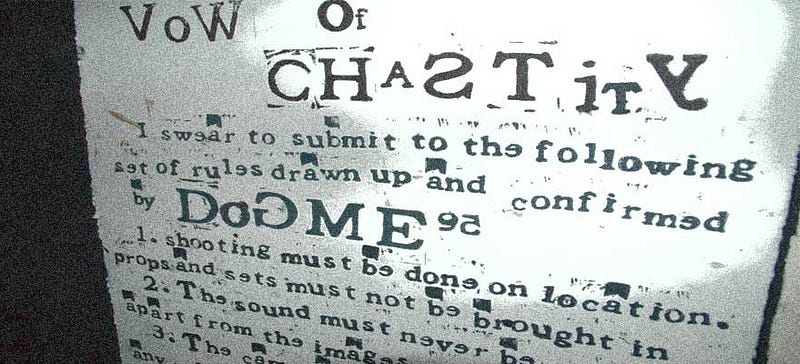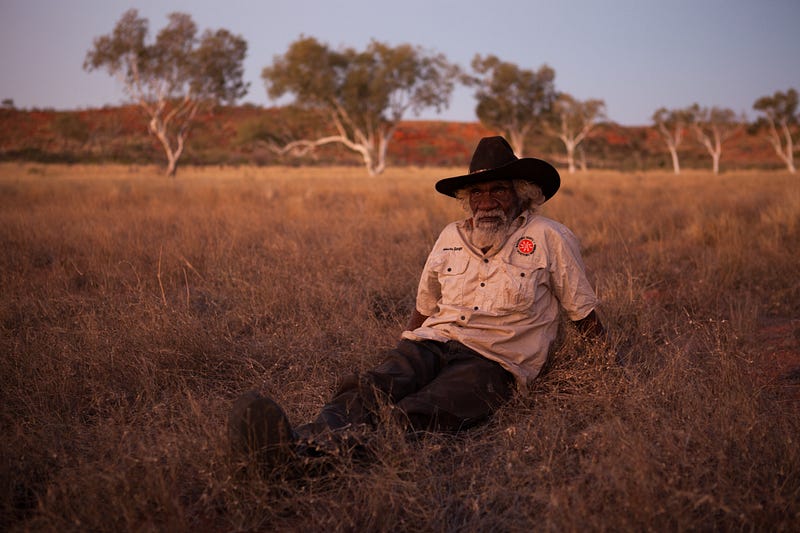Towards a VR Manifesto
An Immerse response
I love manifestos. In her article, Janet spells out the beginnings of a manifesto for VR. I appreciate how polite she is, compared to, say, Lars Von Trier’s Dogme Rules for film 20 years ago. Unlike Lars, Janet starts every one of her rules with “please.”
So I’m 100 with Janet on the Empathy question.
But I’d like to challenge some of her “VR is not Film” rules, which do, in fact, remind me of Lars’ Dogma rules for fiction and his follow-up Dogumentary Code for non-fiction. Van Trier’s Vow of Chastity eschewed lighting, music, tripods, filters, in an effort to push filmmaking to “force the truth out of my characters and settings.” Even edits in documentary, according to Van Trier, needed to be marked by 6–12 frames of black (which has now become common punctuation in VR editing).
 Lars Van
Trier’s Dogme 95
Lars Van
Trier’s Dogme 95Similarly, but more respectfully, Janet asks for no credits or text, no voice-overs, no text overlays, no background music. Or edits! Woah! Some of my favourite pieces in VR have employed all of these techniques. Take Lynette Walworth’s Collisions. Or Notes on Blindness. Or 6x9.
 Lynette
Wallworth’s 360 VR documentary uses voice-over, text, editing, music, and other classic film
techniques.
Lynette
Wallworth’s 360 VR documentary uses voice-over, text, editing, music, and other classic film
techniques.I’m not sure the failures in VR can be chalked up solely to a reliance on film techniques.
I do agree we need to approach VR not as something to watch, but as a virtual space to be travelled through.
And there have been (largely) failures in VR. Most experiences are unsatisfying. They feel like demos, incomplete thoughts, more like proof of concepts or prototypes.
Why did Collisions, 6x9 and Notes on Blindness work? They each felt like a whole, completed idea. They were also a bit longer, each over the 10-minute mark. But all of them did use some standard film techniques.
Most importantly, I agree with Janet that the VR experiences would benefit from a stronger conceptual base in game design, especially as we move from locked 360 videos into more interactive, volumetric and responsive projects. Great examples include Virtual Strangers, which is a satisfying encounter in virtual space with the director. He gives us illustrative tools to draw and communicate with him in the space between the user and the director’s avatar.
Irrational Exuberance gives us fluid and fun response to asteroids headed in our direction. We get to knock them out like tennis balls, using hand-held devices. What that will mean for documentary, though, I am not sure yet. But it is significant.
Second Life is having a come back in VR with some interesting results too. Recently, Artist Skawanetti Fragnito created a live-play guided tour through a virtual art gallery of 3D models of Indigenous Art. It was hard to deeply engage with the art itself, but interacting with the live guide worked.
Janet tells us what to drop from film, and we also need a list of things not to carry over from games: first-person shooting, levels, competition, polarity between narrative elements and gaming elements, etc.
Janet is provoking us to start somewhere other than classic film language. And I’d like to see this manifesto evolve: let’s make a list of the unnecessary scaffolding from film, from games, and also list some of the starting blocks to see how a new medium might emerge in VR, AR and more broadly in post-screen storytelling. And as Janet says, let’s get rid of that magical thinking about technology.
The primary starting block, arguably, involves situating the user with an identity and agency in the space. How can agency be motivated by emotion rather than by winning points? There will be more on that to come.
Let the Manifestos begin!
(btw, RIDM, a documentary festival in Montréal is running a session to draft a VR Manifesto in November)
Immerse is an initiative of Tribeca Film Institute, MIT Open DocLab and The Fledgling Fund. Learn more about our vision for the project here.